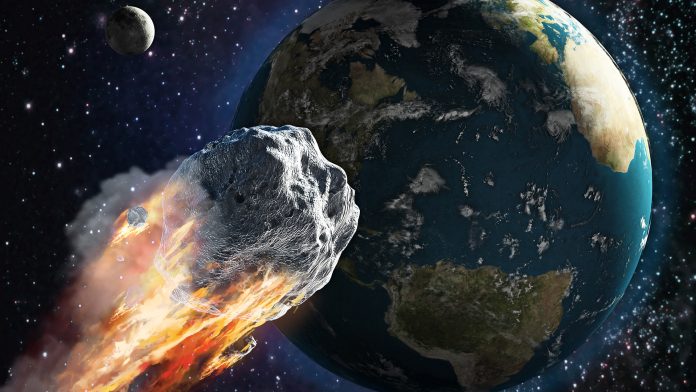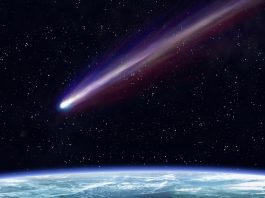A novel study of the rare Winchcombe meteorite may potentially enable scientists to answer the fundamental question of how life on Earth came into existence.
The investigation, funded by the Science and Technology Facilities Council (STFC), aims to reveal the enigmatic composition and history of the Winchcombe meteorite, which may help to illustrate how oceans and life on Earth became an actuality.
Since plummeting to our planet earlier this year, various research has been carried out on the Winchcombe meteorite, indicating that the space rock dates back to the inception of the solar system, around 4.5 billion years ago, with STFC-funded studies able to classify the meteorite officially.
Origins of the Winchcombe meteorite
The Winchcombe meteorite is an exceptionally rare carbonaceous chondrite category of meteorite, pertinently named after the town in Gloucestershire in which it fell, Winchcombe. The intergalactic rock has a stony composition, rich in organic matter and water, which has allowed it to preserve its chemistry from the early formation of the solar system. Previous examinations of the Winchcombe meteorite signifying that it is a member of the CM – Mighei-like – group of carbonaceous chondrites have now been approved formally by the Meteoritical Society.
The STFC afforded an urgency grant to assist in the work of planetary scientists across the UK, which has allowed the Natural History Museum to design and build state-of-the-art curation facilities that are equipped to preserve the meteorite. Additionally, the funding has supplemented time-sensitive mineralogical and organic analysis in specialist laboratories across multiple leading UK institutions.
Dr Ashley King, a UK Research and Innovation (UKRI) Future Leaders Fellow in the Department of Earth Sciences at the Natural History Museum, said: “We are grateful for the funding STFC has provided. Winchcombe is the first meteorite fall to be recovered in the UK for 30 years and the first-ever carbonaceous chondrite to be recovered in our country. STFC’s funding is aiding us with this unique opportunity to discover the origins of water and life on Earth. Through the funding, we have been able to invest in state-of-the-art equipment that has contributed to our analysis and research into the Winchcombe meteorite.”
Looking to the sky for answers
The researchers were able to track the Winchcombe meteorite by utilising images and video footage collated by the UK Fireball Alliance (UKFAll), which the STFC also funds and is partnered with the UK’s meteor camera networks. The fragments of the meteorite were efficiently located and recovered by employing this data, with scientists studying the Winchcombe meteorite ever since to comprehend its mineralogy and chemistry.
Dr Luke Daly, from the University of Glasgow and co-lead of the UK Fireball Network, said: “Being able to investigate Winchcombe is a dream come true. Many of us have spent our entire careers studying this type of rare meteorite. We are also involved in JAXA’s Hayabusa2 and NASA’s OSIRIS-REx missions, which aim to return pristine samples of carbonaceous asteroids to the Earth. For a carbonaceous chondrite meteorite to fall in the UK, and for it to be recovered so quickly and have a known orbit, is a really special event and a fantastic opportunity for the UK planetary science community.”
The STFC funding ensured that examinations of water and organics of the Winchcombe meteorite could be carried out before the Earth’s terrestrial environment contaminated it.
Dr Queenie Chan from Royal Holloway, University of London, added: “The teams’ preliminary analyses confirm that Winchcombe contains a wide range of organic material! Studying the meteorite only weeks after the fall, before any significant terrestrial contamination, means that we really are peering back in time at the ingredients present at the birth of the solar system and learning about how they came together to make planets like the Earth.”
Thanks to the work of the UK’s planetary science community, the public can now see a portion of the Winchcombe meteorite, as it is on display in London’s Natural History Museum.









